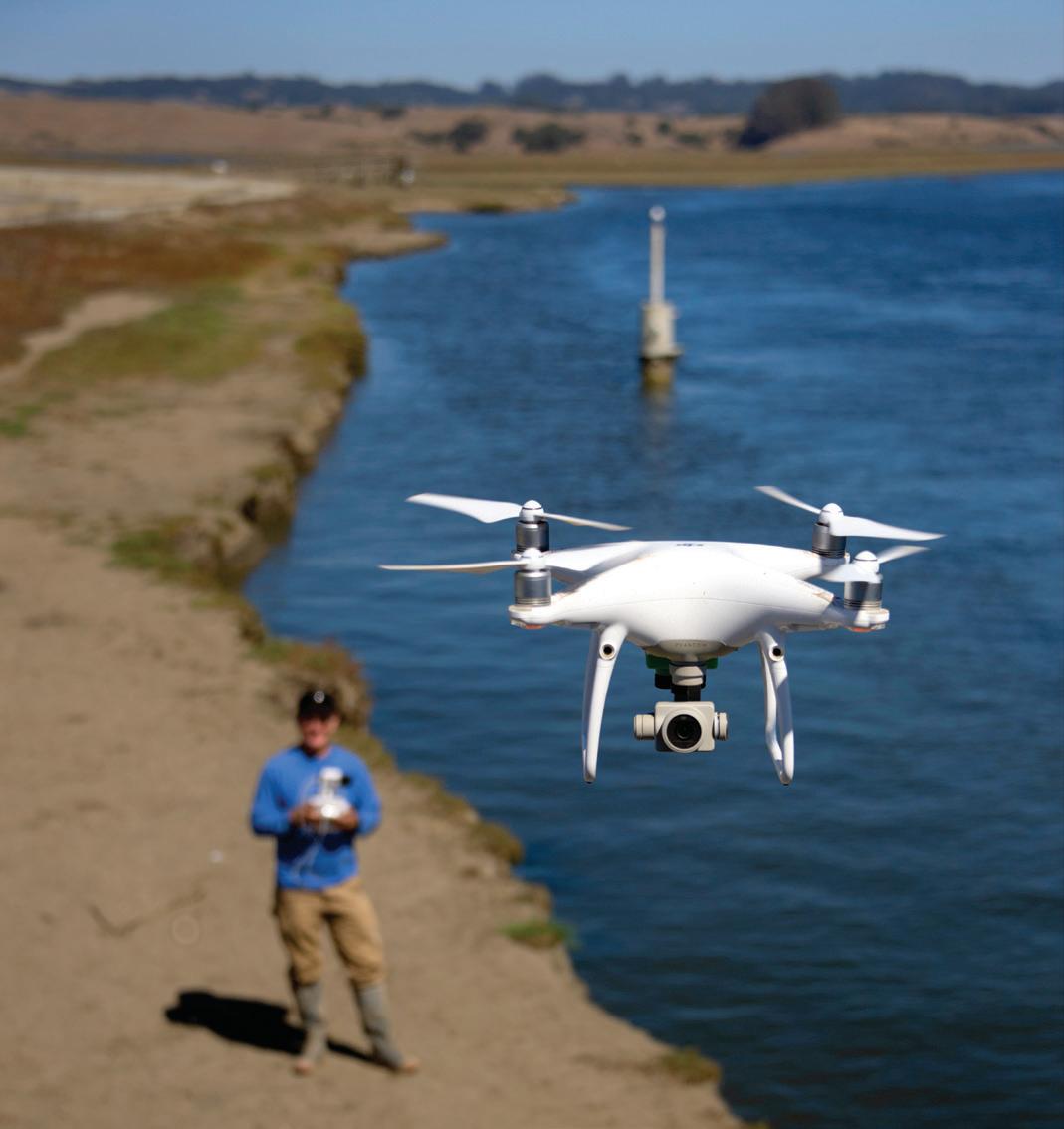
1 minute read
A Bird's-Eye View
Raise the topic of drones, and the reaction is often visceral: people love them or hate them. Like much technology, drones (also known as UAVs, or “unoccupied aerial vehicles”) tend to earn this reputation — positive or negative — based on how and where they are used. Drones can be a nuisance and have detrimental impacts when their flight disturbs sensitive wildlife or disrupts peaceful enjoyment of natural places. For these reasons and more, the law prohibits use of recreational drones over the main channel of the slough and at the Reserve.
On the other hand, permitted drones can be a useful and cost-effective tool to help scientists map and monitor natural resources and stewardship. In a recent study published in the journal Frontiers in Environmental Science, a team of Reserve researchers, including John Haskins and Moss Landing Marine Labs’ Charlie Endris, detailed how UAVs enabled them to accurately monitor the progress of restoration efforts at Hester Marsh at relatively low cost.

Reserve researcher John Haskins coauthored a recent study on the use of UAVs in helping map and monitor natural resources and stewardship.
Photo by Heather Hayashi
They were able to use UAVs for a range of field research tasks: to calculate the volume of soil moved during construction, to track marsh elevation targets, to monitor patterns of vegetation growth, and to map subsidence, erosion, and tidal creek development.
In addition to this versatility, the researchers also found UAV monitoring convenient, allowing them to survey areas otherwise difficult to physically access. UAVs also enable researchers to schedule data collection to suit specific project needs, rather than waiting for outside agencies to upload relevant satellite or aerial survey data.
With the publication of this study, the Reserve’s innovative use of UAVs at Hester Marsh not only benefits the Elkhorn Slough — it provides a model for restoration projects elsewhere throughout the world.
To learn more or to download a PDF (7 MB) of the study, visit www.elkhornslough.org/drone-technology-used-to-inform-restoration.









